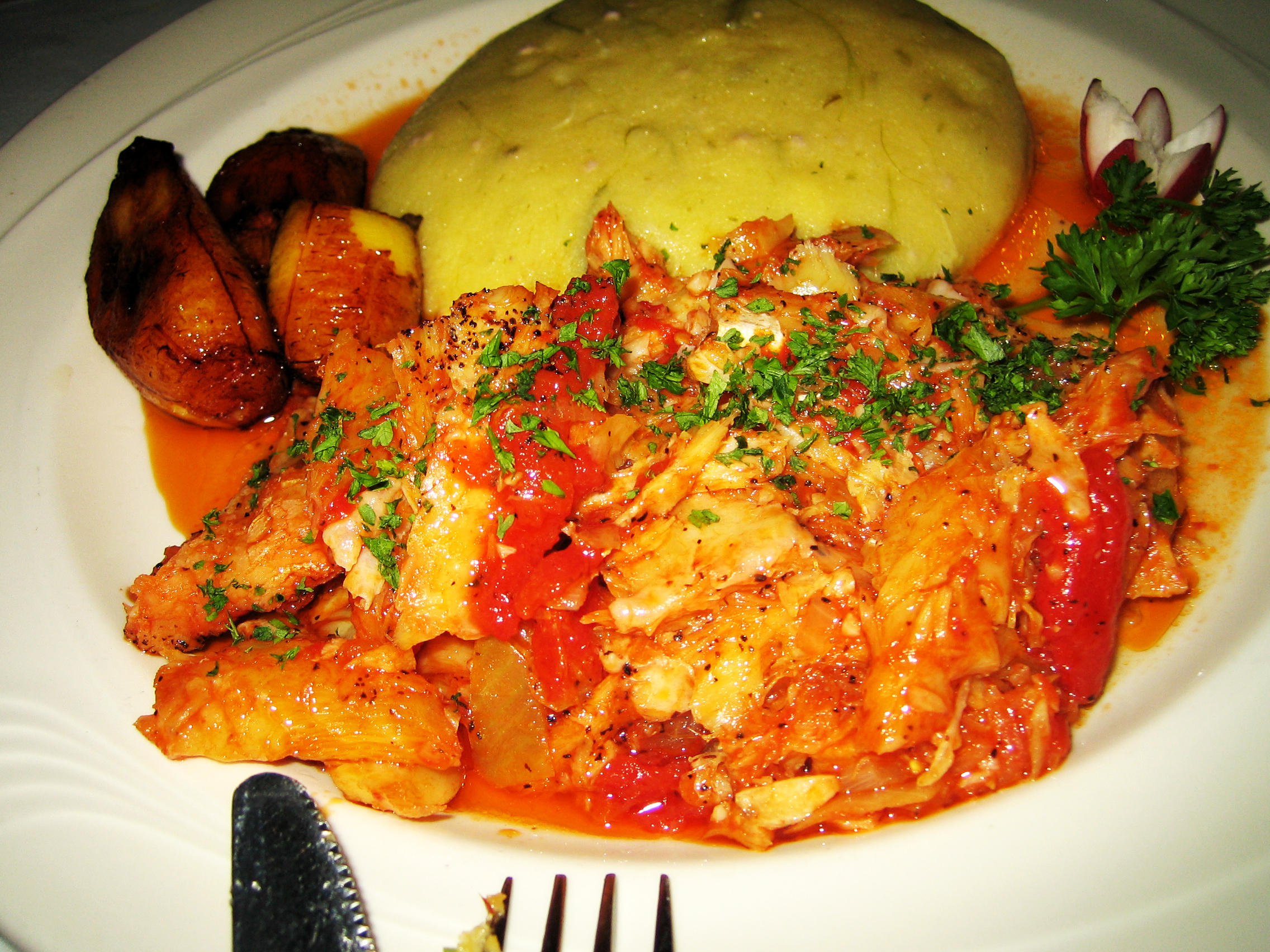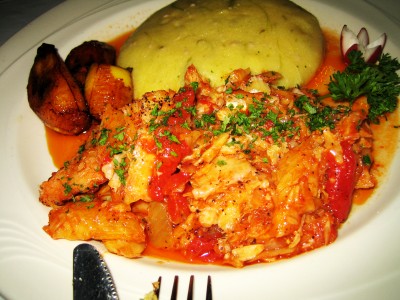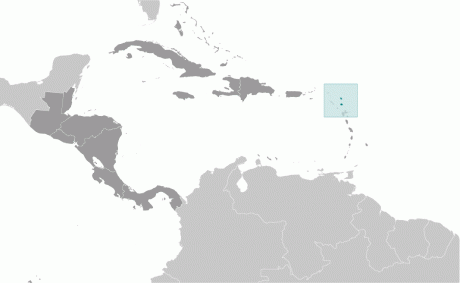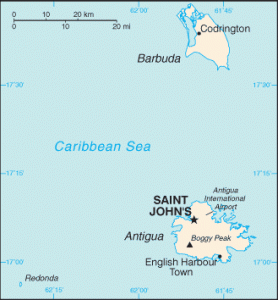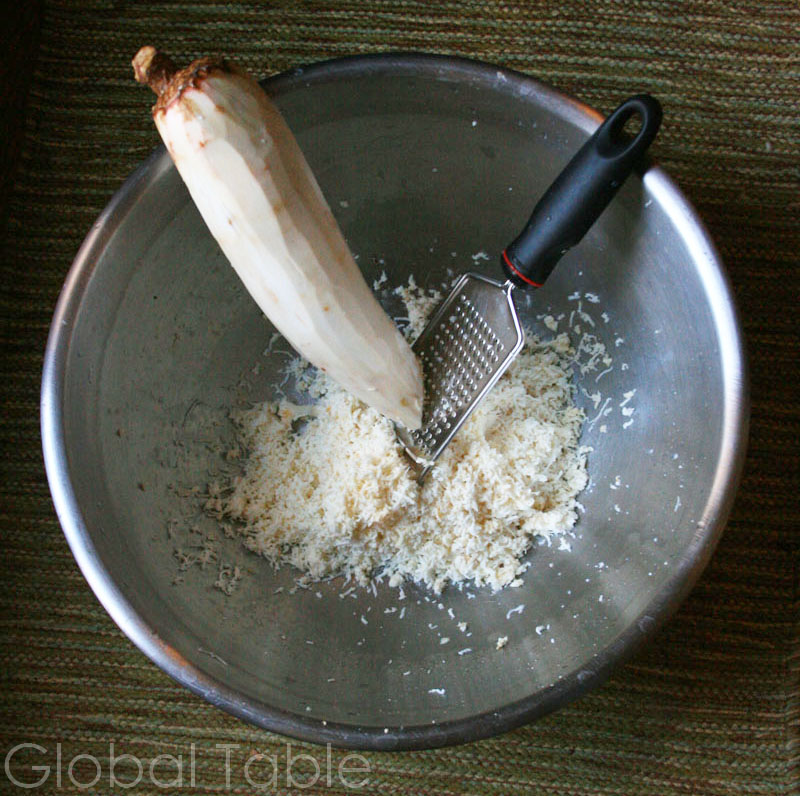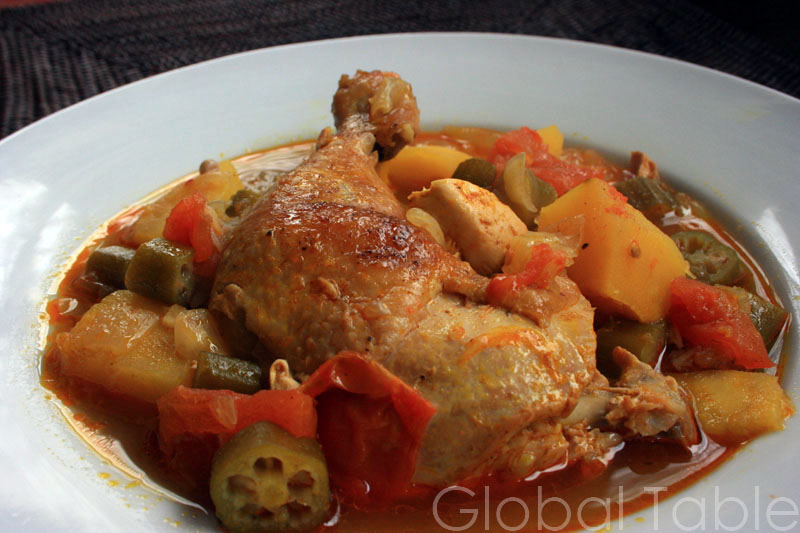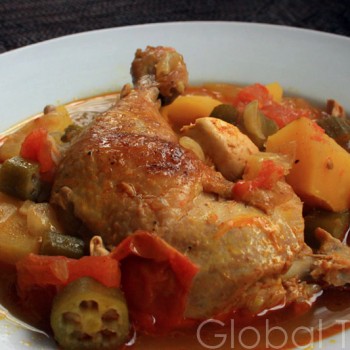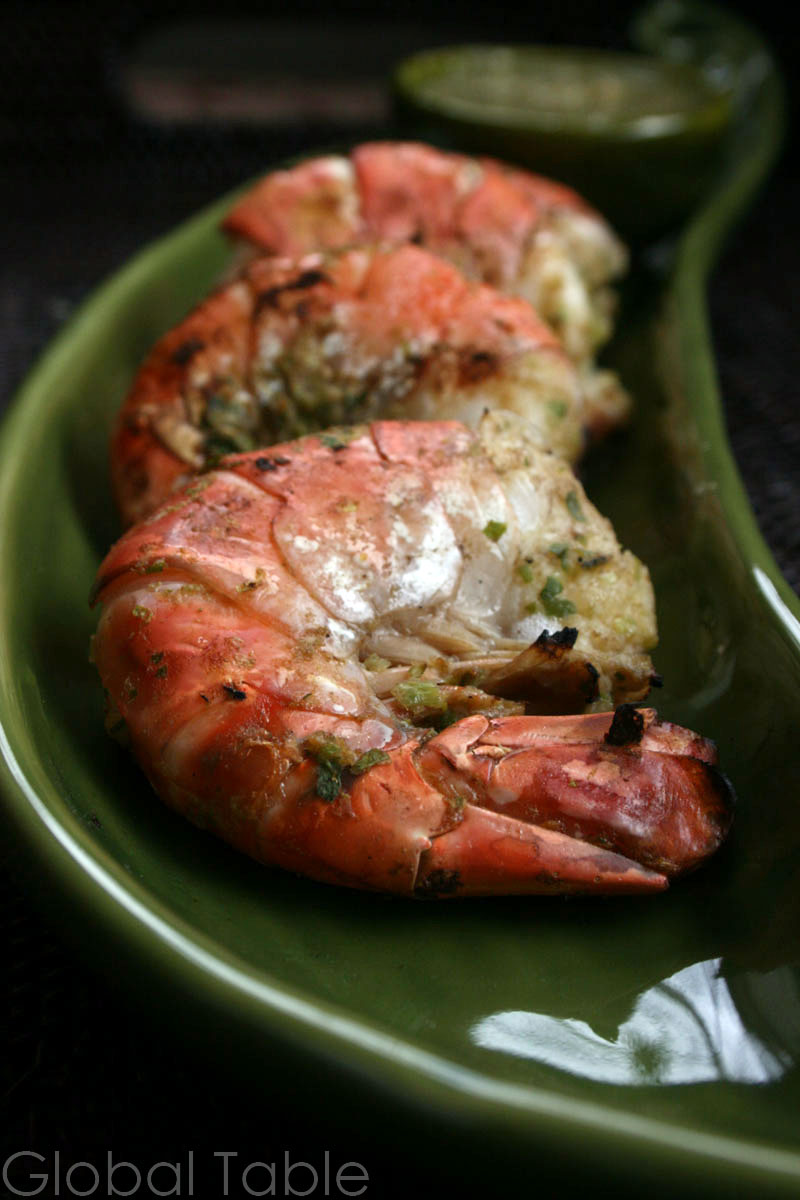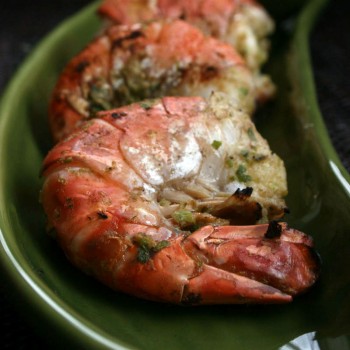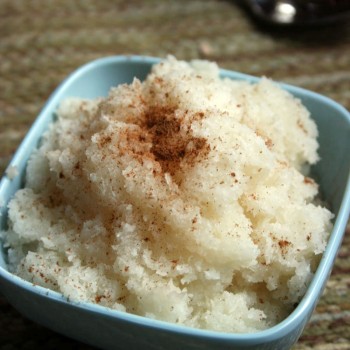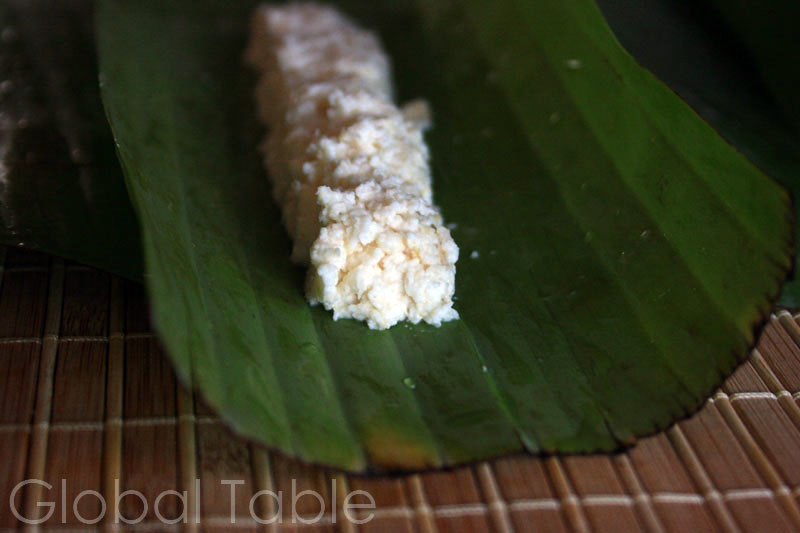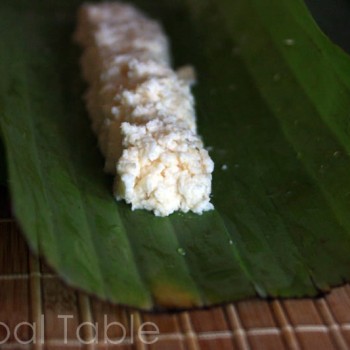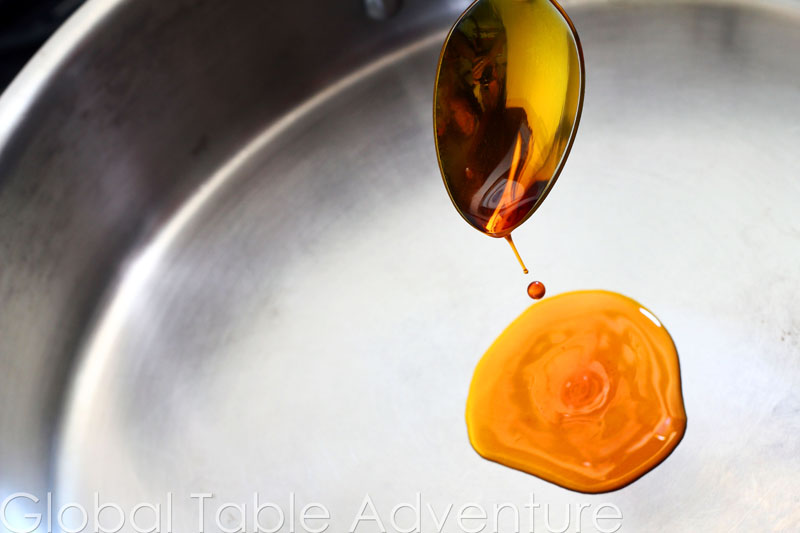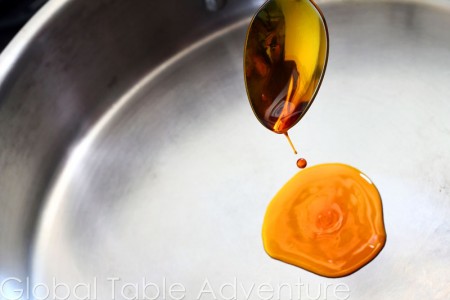This is meal #5 in my personal challenge to eat one meal from every country in the world.
I am something of an “Eeyore.” I wear worry like it’s going out of style.
These are just a few of the things I worry about when I put on a dinner party:
– will the food taste good?
– what if I burn the food?
– what if the food is raw?
– what if I don’t have time to finish the meal?
– will my friends like the food?
– will I like the food?
So what about this weekend’s Global Table? I was unsure of three ingredients: the red palm oil, the habanero, and the prawns. All of these items were new to me and I had no way to predict how they would taste. Worse yet, I wasn’t even sure how to work with them.
I overcame my Eeyore tendencies by telling myself that if an entire country eats these foods, they are probably pretty good!
Turns out, I was right.
For the fifth weekend in a row, things went great. The food was tasty, the conversation interesting – I have nothing to complain about.
We even had an extra challenge with two picky eaters at the table! I was impressed that every dish got tasted and reviewed fairly.
From here on out I am going to drop the Eeyore act and enjoy the moment more. After all, life is short!
Camarao Grelhado Piri Piri (Grilled Prawns with Peppers) [Recipe]


What did I like most about this dish?
First of all, this was my first time eating prawns! At about 3″ in diameter they look like ginormous shrimp. I was actually taken aback by how large they were. Ours came frozen from Indonesia.
My husband manned the grill with specific instructions to remove the prawns the second they were no longer translucent. He did a great job; the meat was cooked perfectly (the texture reminded me of lobster).
Although the dipping sauce was a bit loaded with vinegar, the fresh flavors were a big hit with our friends. The dominant flavors of the marinade also include garlic and cumin. Although certainly not a “first date” combination, the prawns came out so good you won’t care!
One final thing: I liked that I could put this whole recipe together the day before, making meal day that much less stressful.
What did I like least about this dish?
The amount of vinegar got mixed reviews. Some felt it was a little strong for dipping. You might try halving the amount the recipe calls for and see if that works for you. You can always add more… Oh yeah, and at 16.99/lb this is not a cheap appetizer.
Baton de Manioc (Yuca/Cassava Sticks) [Recipe]


What did I like most about this dish?
Looking for “exotic” food? Look no further. Making yuca sticks is a fun process, totally unique to Africa (from what I have read). I spent a good hour grating and mashing the yuca. Filling the banana leaves was another 20 minutes. While I enjoy this kind of project, its only fun if you set aside enough time.
In terms of flavor, the banana leaves give the yuca an artichoke flavor which I personally love. The texture is really dense and sticky.
What did I like least about this dish?
This dish is traditionally unseasoned, making the yuca a little bland. In the long run I don’t think it matters, though, because it is supposed to be eaten with stews etc. Rather like bread, the sticks take on the flavor of whatever you dip them in.
One important note: the yuca blows up in your stomach, making you progressively more full as the evening goes on. Be careful to not overindulge in this filling dish.
Muamba de Galinha (chicken stew) [Recipe]

What did I like most about this dish?
I am familiar with all of the ingredients in this stew, except for the oil. This was comforting! Also, the recipe was easy to put together, with not real complicated steps.
The chicken was super tender and the winter squash added a nice, sweet flavor to this stew.
What did I like least about this dish?
Like any strong flavor, red palm oil takes a little adjustment. Consider reducing the amount of the oil by half. You can add more at the end of cooking if you would like the red palm oil to play a bolder part in the dish.
Cocada Angolana [Recipe]

What do I like most about this dish?
Cocada Angolana is pretty much coconut candy. I am not a big fan of coconut at all, however this dish was edible, even to me. I think my husband enjoyed watching me eat something I would not normally eat. I told him (and our friends who ate with us) that I follow my own rules, eating everything.
What do I like least about this dish?
To be honest, I really dislike shredded coconut. I would order pretty much anything off a menu before ordering shredding coconut. Ironically, I do love coconut milk and coconut pudding… it’s a texture thing I guess. I managed to survive this dish by buying the finest shredded coconut I could.
If you love shredded coconut, you’ll be in heaven 🙂



